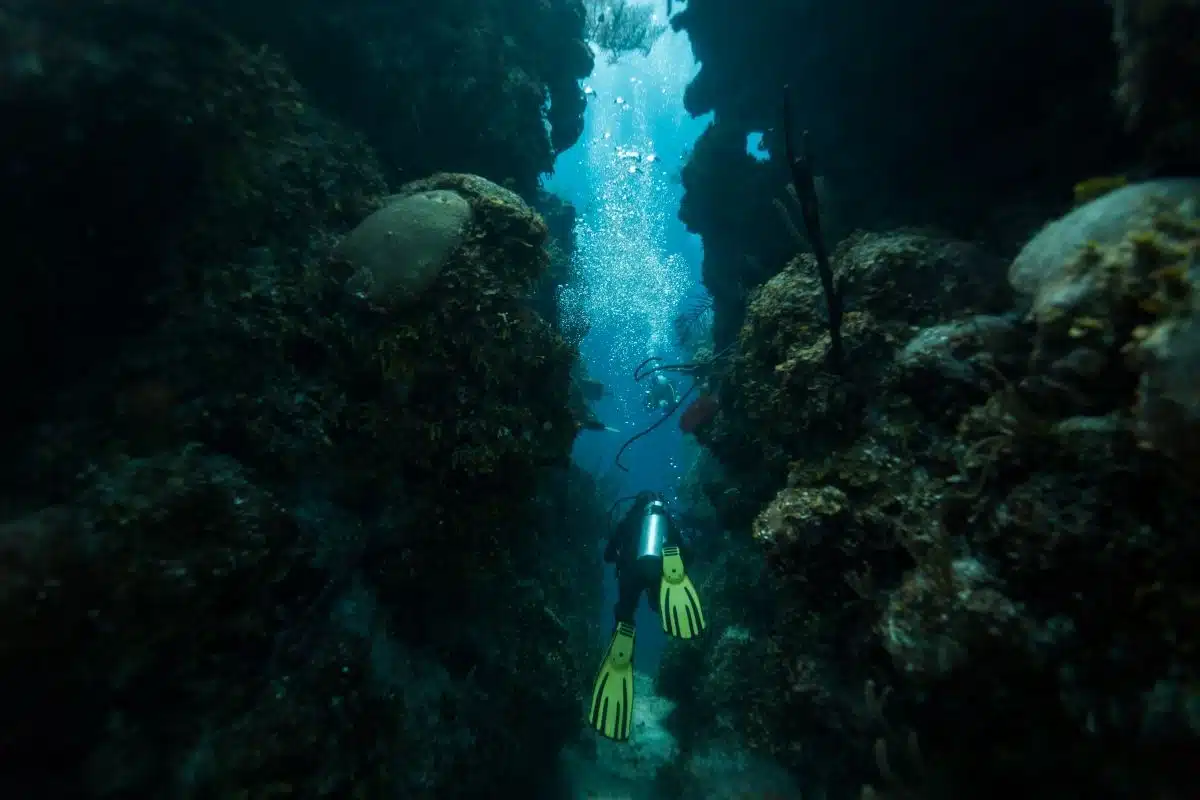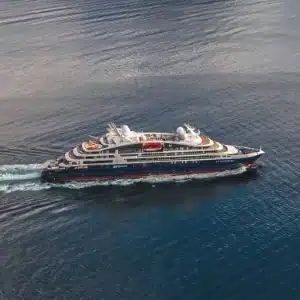Let’s dive into one of the deepest submarine sinkholes in the world
There is still more to discover on this planet. Off the coast of a country hidden in the Caribbean Sea – Belize – is a place millions of years old, obscured by 124 metres of water: the Great Blue Hole.
Belize: Noah’s land
To the south of Mexico and east of Guatemala, flourishes the land of the free in the shadow of the Maya Mountains. Welcome to Belize, an unspoilt country in Central America. A tropical paradise bordered by the Caribbean Sea that was the romanticised refuge of the world’s most legendary pirates. Belize is a natural, open-air paradise, a country with such an incredible wealth of flora and fauna that you’d swear Noah’s Ark ran aground there.

In addition to the usual charming Caribbean stereotypes, this English-speaking strip of land is also a popular destination for history lovers as pre-Columbian civilisations left a major mark on it. Belize can be discovered on land and at sea. Along its coastline lies the second largest barrier reef in the world, the Belize Barrier Reef, which includes the Lighthouse Reef Atoll– a maritime zone that is home to perhaps the most fascinating and impressive part of the country: the Great Blue Hole.
Great Blue Hole: the world’s eye
80 km off the coast of Belize, right in the heart of the Lighthouse Reef Atoll… the world opens up beneath the hulls of the boats that come to see a fascinating geological phenomenon: the Great Blue Hole. Encircled by a giant ring of coral with a diameter of 318 metres, GBH is an underwater cenote (a term derived from the Mayan word for “sacred pit”), in other words, a sinkhole 124 metres deep, i.e. the second deepest in the world, the deepest being in the Red Sea. This natural curiosity is made even more impressive by its perfectly round shape, which sometimes earns it the nickname “the world’s eye”.

The scientific community continue to question its huge size as its depth cannot be explained by paleontological theories. These cenotes date back to the ice age, to a time when the sea level was much lower. Yet, the depth of the GBH does not correspond to what we know about the sea levels at that time. The ocean in that region of the world was never that low. Could it have been formed in a different way? The mystery lies 124 metres underwater, in a sea that is sometimes blue and crystal-clear and sometimes as black as night – the ultimate pilgrimage for divers seeking thrills and a sense of what gigantic really means.
A bottomless history
Of the many boats, ships and vessels that have sailed across the surface of this deep abyss, one shaped the history of this sinkhole: the Calypso. Captain Jacques-Yves Cousteau’s boat dropped anchor (which probably never hit the bottom!) above GBH in 1971 to draw up a detailed map of the site. After weeks of study, the explorer declared the hole to be one of the top 10 scuba diving sites in the world and the Frenchman knew what he was talking about! Listed as UNESCO World Heritage in 1996, the Great Blue Hole may still have some secrets up its sleeve. The following year, in 1997, a cave was discovered 50 metres deep in the west wall of the hole: West Wall Cave. Deep down within this cave, divers found a tunnel over 46 metres long, littered with the skeletons of turtles and other sea creatures. Was it the hideout of a land animal or a sea creature? It’s still a complete mystery.

From sensory delight to dizzying depths, Belize and its seabed invite you to dive into the unknown, the last luxury left in a world we think we know.

PONANT takes you there
Get close to one of the top ten most beautiful scuba diving sites in the world during a cruise in Central America.



